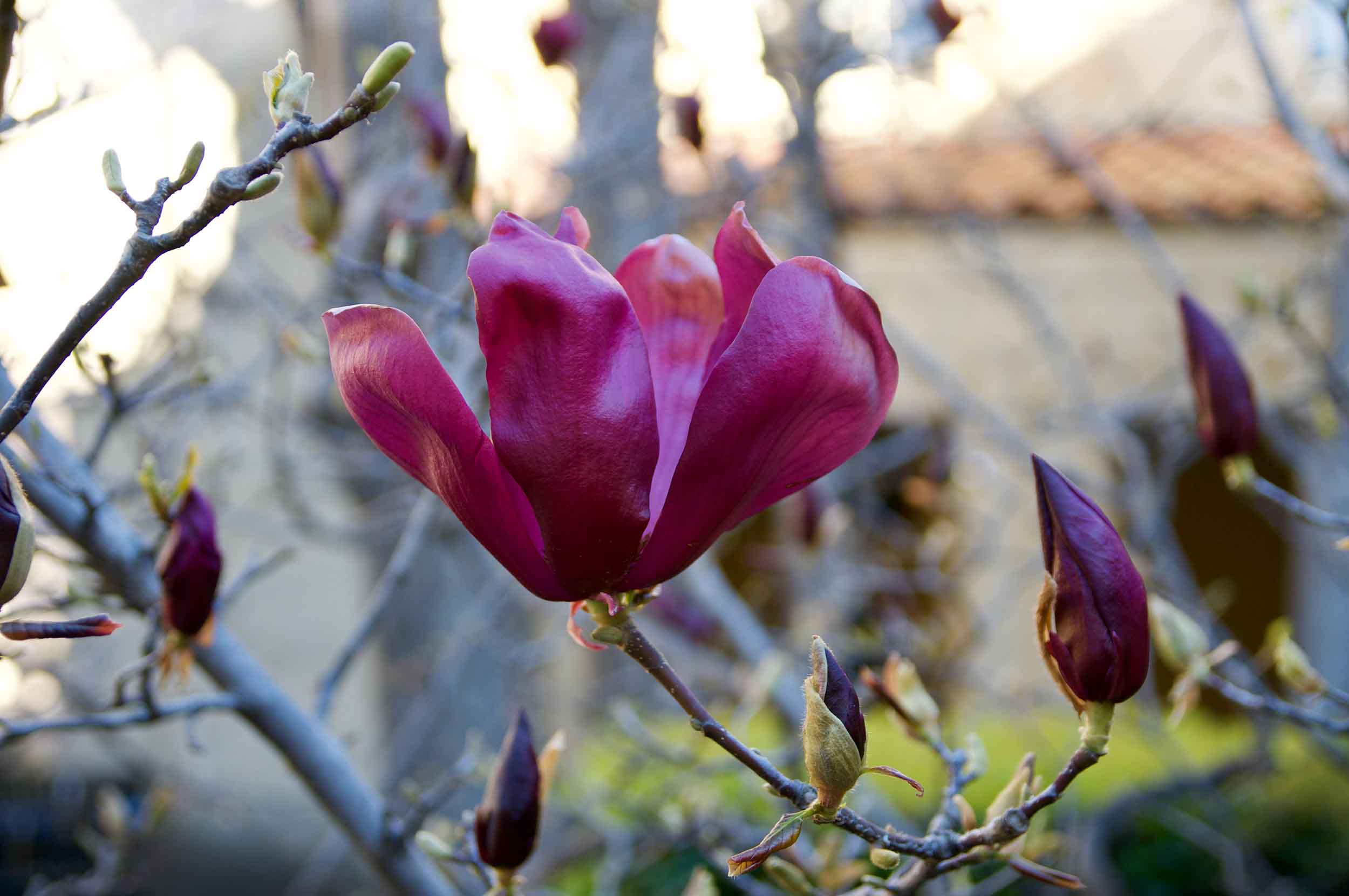Magnolia liliiflora
 lily magnolia
lily magnolia

Large purple, tulip-shaped flowers distinguish this deciduous, modest-sized magnolia which has long been under cultivation in Japan and China, whence it was brought to Europe in the 18th century. See it at the School of Education north courtyard. Another is on Lomita Mall near Jane Stanford Way among the viburnum; compare with the M. × soulangeana nearby.
A specimen reported in front of Bechtel International Center was removed.
Magnolia notes
M. × soulangeana, liliiflora, and stellata share the striking characteristic that flowering occurs in advance of the leaves (or sometimes with the earliest foliage) – often in February. For stellata, sepals and petals are pure white, usually 12 or more and 4 times as long as broad (each up to only about 1.5 cm. wide). Liliiflora and × soulangeana petals are wider. Liliiflora petals are dark purple, with 3 short, narrow sepals. M. × soulangeana petals are broader still, pink to purple, lighter colored to white inside; its petaloid sepals vary from half as long as the petals to frequently nearly as long (in ours).
Name derivation: Magnolia – Pierre Magnol, 1638–1715, botanist of Montpellier.
About this Entry: The main text of this entry is from the book Trees of Stanford and Environs, by Ronald Bracewell, published 2005. Magnolia Notes added by John Rawlings some time before 2014. Bechtel specimen indicated as removed (SP, Mar 2022).




